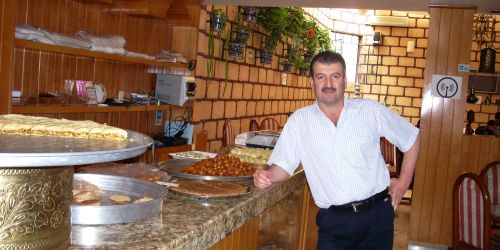There are about 400,000 Mexicans of Lebanese descent, and most of them are in Mexico City. My favorite is Achmed, pictured above, the manager of the Al-Andalus restaurant on calle Nueva York in the Colonia Nápoles, in walking distance from my apartment. The original, and more splendid, branch of the restaurant is in the centro histórico. They have everything there, except Achmed.
No matter how infrequently I go to Al-Andalus, Achmed always greets me as if I ate there every day, indeed as if I were part of the family.
When Jabbar Yassin Husin, an Iraqi writer who lives in France, visited Mexico, we made a date to have coffee together at the apartment where he was staying. He asked me to bring him some kind of cake or cookie, so I went to Al-Andalus and got an assortment of Lebanese pastries. When I told Achmed that I was bringing them to an Iraqi, he had me take him a particular cookie. He professed that at Al-Andalus the cooks prepared more delectably than they do in Baghdad.
The last thing Jabbar expected was traditional Middle-Eastern pastry in Mexico City. He fell into a Proustian swoon and insisted we go to visit Achmed. The two of them, and a couple of other men, sat for hours speaking Arabic, as if they were all old friends, shooting the breeze around the corner from the souk.










